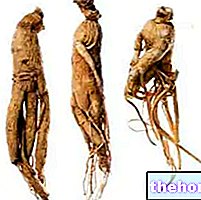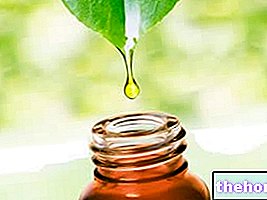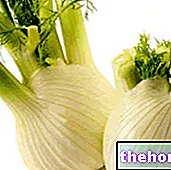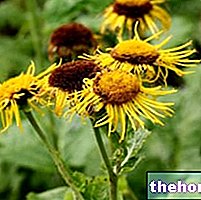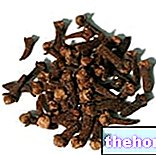Fucus vesiculosus L.
Fam. Fucaceae
Feofita = Brown algae
Common names: Sea oak, Kelp, Black tip.
Description
The fucus is a "seaweed with a thallus up to 2 meters long, soft and flattened, olive green in color, divided into a rhizoid, or sucker-shaped basal disk with which it adheres to the rock, a jamb with two flattened wing parts, and of a frond, with dichotomous branching, which resolves into two ribbon-like sheets up to 5 cm wide, with a median rib more or less evident depending on the species.This does not contain conductive vessels: it is simply a thickening.
The thalli of the fucus are complex, presenting an epidermis, a cortex and a central median region more or less evident depending on the species. This does not contain conductive vessels: it is simply a thickening.
At the extremity of some laminae there are reproductive swellings. These are studded with protrusions that take the name of CONCEPTACLES and correspond to spherical cavities communicating with the outside through a canaliculus (ostiole). They are swollen due to the presence of deposits of gelatinous substances, and contain female gametes (oospheres) or male gametes (anterozoids).

Fucaceae are haplodiplontius organisms with a clear prevalence of the diploid phase (sporophyte). Inside the conceptacles, meiosis occurs and the production of meiospores which divide, becoming all gametes (oospheres and anterozoa). Fucus has, in fact, a gametophyte devoid of vegetative cells. Vegetative reproduction occurs by fragmentation of the thallus: - when it is fixed to the substrate, it divides into several portions which, however, remain firmly attached to the parent; - when, due to the mechanical action of the waves, the portions become detached, new individuals are formed
Areal
Most species of the genus Fucus they inhabit the cold seas, however there are some with a wide tolerance for the temperate and warm regions which, however, lose capacity for sexual reproduction.
Fucus vesiculosus it is common in the British and Atlantic islands of America and northern Europe, it also grows along the rocky coasts of Morocco, reproducing only by fragmentation.
Cultivation Technique
Thanks to its ability to reproduce by vegetative fragmentation, the Fucus vesiculosus lends itself to rational harvests in large quantities. For this reason it is often cultivated even if the operations are, of course, different from those of common agriculture. In general, stretches of sea are chosen where a certain number of specimens already live, but where environmental conditions are not favorable for good propagation. An example are sandy bottoms or bottoms that are too deep. In these cases the seaweed growers artfully throw large stones with a rough surface into the sea, at a convenient depth and distributed over lots of considerable area, limited by corridors in order to allow passageways free from vegetation for cutting and harvesting operations. The sea currents and the wave motions are responsible for the propagation of the species by transporting the fertilized oospheres, always produced in large numbers, to the prepared areas. year of life are ready to be mowed. Out of the water the Fucus vesiculosus dies after about 5 hours.
CONTENTS: rich in mineral salts, Vit. C, carotenes
DRUGS: it is represented by FRONDE.
ACTIVE INGREDIENTS: inorganic and protein iodine, potassium, mineral salts, vitamins, alginic acid, carbohydrates, carotenoids, bromophenols, ascorbic acid
Uses
Phytotherapy for its content of iodine and bromine, fucus is indicated against hypothyroidism; it is also a hemostatic agent; due to the presence of numerous vitamins and minerals it is an excellent supplement; it is effective against gastro-oesophageal reflux thanks to the viscous gels formed from alginates which protect the stomach mucosa. Algina is used in pharmacies as an excipient for its emulsifying properties.
Dietetics: fucus is used as a stimulant of the basal metabolism in cases of obesity and has a wide use in slimming products (because it produces a sense of satiety by producing a gel in the stomach). To learn more about the dietary and phytotherapeutic uses of fucus click here ..
Nutrition: the organic derivatives of alginates are used as food gums, thickeners in the production of ice cream, puddings and processed cheeses.
Cosmetics: in numerous phytocosmetic preparations, especially remineralizing and slimming; Alginates are used as colloids and as anti-cellulite products. Deepening: fucus extract in cosmetics
Industry: red wool and textile dyes.Alginic acid obtained from fucus can be processed to obtain textile fibers, also used in surgery, and a plastic material used to make films, gels and gums. Algin is used in industry as a condenser and stabilizer in the food industry ( candies, ice creams), textiles (dressings), leather, hydrocarbons (they emulsify, solidify and make non-flammable products), lubricants, firefighting, paper and cardboard manufacturing.
Agriculture: fucus is used as forage, organic fertilizer and as plant-based phytotherapeutic agents in organic farming.
Other articles on "Fucus"
- Brown Alga - Properties of Fucus in Phytotherapy
- Fucus in Herbalist: properties of Fucus

